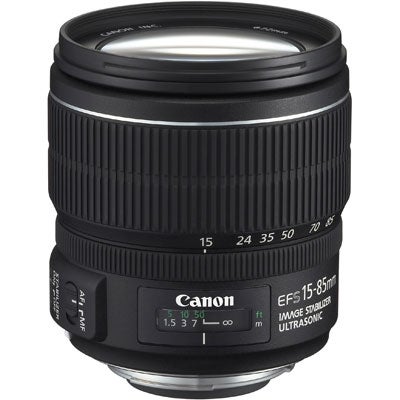With Image Stablisation, UD elements and an Ultrasonic Motor, is this feature-filled objective the perfect kit-lens replacement?
Canon EF-S 15-85mm f/3.5-5.6 IS USM Review
Canon has made the zoom ring the centre of attention in this lens: it dominates the front half of the zoom and has a wonderfully slick action that offers the ideal amount of resistance. There is a focused-distance window tucked away at the back of the lens, within which is included a short region marked Macro.
Strangely, there seems to be no mention of the ‘Macro’ feature in the accompanying Instruction Book or on Canon’s web-page for this particular lens. The amount of close-focusing offered is very small indeed but it might just be enough to get a useful advantage in some situations, especially when using the 85mm focal-length setting.
The sliders to switch between focusing modes and to turn the IS system off/on are on the left of the focused-distance window and are fairly easy to find by touch alone. The lens is finished in a slightly satin texture that feels good and encourages confidence when fitting and removing the lens. Sadly, Canon has not included a lens hood.
Field testing confirms Canon’s assertion that its single-mode IS system is more than sufficient for the job in hand. Not only does it steady the image but it also does so more effectively than Nikon’s dual-mode VR system. To be fair, this advantage may in part be derived from the Canon zoom’s greater mass and more comfortable grip but those are perfectly valid points in their own right and cannot detract from the results obtained.
MTF testing returned mixed results. The lens is solid down to f/8 (and on to f/11 except at the minimum focal-length setting) but after that the resolution shows a steady decline that drops to some very low figures at minimum aperture (not shown on the MTF graph here). There were also some signs of chromatic aberration at both ends of the zoom range. The 50mm setting seemed to be the focal-length that produced the least chromatic aberration.






